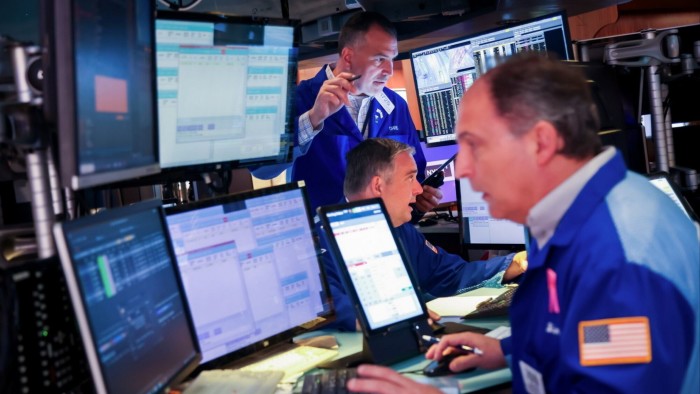Unlock the White House Watch newsletter for free
Your guide to what Trump’s second term means for Washington, business and the world
After passing his tax-cutting “big, beautiful bill”, Donald Trump has been busy reviving his protectionist agenda. Last week the US president extended the 90-day pause on his “liberation day” import duties until August 1, and wrote punchy letters and social media posts to key trade partners, goading them to strike quick deals with his administration. He also proposed a 50 per cent levy on copper and a 200 per cent charge on pharmaceutical products. Wall Street, however, reacted nonchalantly. The S&P 500 continues to trade close to record highs, over 25 per cent above the lows it dipped to in the aftermath of Trump’s initial April 2 “reciprocal” tariff announcements.
With the president’s on-and-off levy declarations, it is indeed difficult to track where US tariff rates are, let alone predict where they will end up. That said, incorporating policy announcements through to July 13, the Yale Budget Lab estimates that the overall US average effective tariff rate could rise to its highest in over a century — and around eight times higher than where it was last year. At these levels, most economists would expect tariff-induced price rises eventually to sap profit margins and growth. If so, the US stock market has not received the message. Risk appetite remains high and valuations are rich.
There are two dominant explanations for the bullishness. First, investors have warmed to the idea that the president won’t actually follow through with his worst tariff threats — also known as the “Trump Always Chickens Out”, or “Taco”, trade. The president certainly has form in postponing or cancelling harmful economic policies. Second, the duties in place so far — including a 10 per cent universal tariff — have not yet had a significant impact on inflation or economic growth.
Both narratives are worryingly rose-tinted. It still requires a leap of faith to assume Trump will back away from implementing tariffs on August 1. Last week the president claimed that his import duties had been “very well received”, citing the stock market reaction.
America’s current economic performance is also a poor indicator of how it may fare in the coming months. Stockpiling has helped to restrain the pass-through of tariffs into consumer prices. Numerous companies have withdrawn earnings guidance amid the uncertainty too. Moreover, Trump’s full tariff package is yet to be enacted. The administration is mulling further sector-specific duties, which could pinch the US tech industry, the driving force behind America’s stock market strength. For these reasons, second-quarter company results over the coming weeks ought to be parsed carefully.
Broader policy risks have also grown. Last week, the White House accused the Federal Reserve chair, Jay Powell, of “grossly” mismanaging a refurbishment of the central bank’s headquarters. That opened a new front in the administration’s destabilising attacks on the central bank’s independence. Trump’s deficit-raising budget bill is adding to concerns over the sustainability of America’s public finances. The economy is losing momentum too: the jobs market is cooling and consumer spending has weakened.
Corporate America has shown its resilience by confounding the gloomiest forecasts so far, and Trump might once again chicken out. But the heightened uncertainty alone is enough reason for investors to exercise caution. A correction from current heights would be painful: stock markets are heavily concentrated and the share of household assets held in equities is also near a historic high. Right now, US stocks appear priced for the most optimistic of outcomes. With a capricious leader in the White House, that looks more like blind faith than rational thinking.
https://www.ft.com/content/ec92ab1e-92c3-4016-adcc-e7c539eca584


